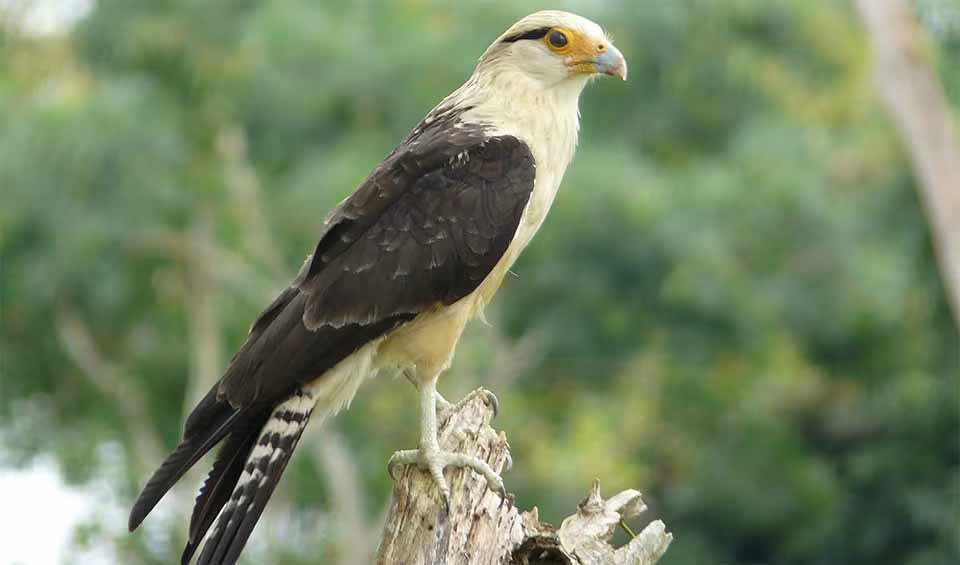The yellow-headed caracara, a ubiquitous small bird of prey found across Central and South America, boasts distinctive features that set it apart in the avian world. Sporting a striking palette of pale buff to cream-colored plumage adorning its head and neck, complemented by a bold black stripe extending behind its eyes, this charismatic raptor commands attention wherever it goes.
Unlike some of its woodland-dwelling counterparts, the yellow-headed caracara prefers open habitats with sparse tree cover, including pastures, cultivated areas, and the borders of forests. This habitat preference reflects its adaptable nature and ability to thrive in diverse landscapes, from grasslands to agricultural fields.
As an omnivorous opportunist, the yellow-headed caracara boasts a diverse diet that includes carrion, insects, fish, birds, fruits, and even maize. Its culinary preferences demonstrate its versatility and ability to exploit a wide range of food resources available in its environment. Notably, it is often observed perched on the backs of cattle, where it acts as a diligent caretaker, picking off ticks and other parasites—an ingenious example of symbiotic behavior between species.
In addition to its foraging habits, the yellow-headed caracara exhibits social behavior, frequently congregating in small groups. These gatherings serve various purposes, from communal roosting to cooperative hunting or scavenging. Their sociable nature adds a layer of complexity to their behavioral repertoire, underscoring the importance of social interactions in their daily lives.
Breeding season for the yellow-headed caracara is a time of activity and vigor, marked by the construction of large stick nests situated high in palm trees, often reaching heights of 15 meters (50 feet) above the ground. These lofty nesting sites provide security and protection for the female as she lays her clutch of 1-2 eggs, although occasional clutches of four eggs have been reported. This nesting strategy helps safeguard the vulnerable eggs and nestlings from potential predators, ensuring the continuation of the species.
Distribution
 Argentina
Argentina Bolivia
Bolivia Brazil
Brazil Colombia
Colombia Costa Rica
Costa Rica Ecuador
Ecuador French Guiana
French Guiana Guyana
Guyana Nicaragua
Nicaragua Panama
Panama Paraguay
Paraguay Peru
Peru Suriname
Suriname Trinidad & Tobago
Trinidad & Tobago Uruguay
Uruguay Venezuela
VenezuelaAnything we've missed?
Help us improve this page by suggesting edits. Glory never dies!
Suggest an editGet to know me
Terrestrial / Aquatic
Altricial / Precocial
Polygamous / Monogamous
Dimorphic (size) / Monomorphic
Active: Diurnal / Nocturnal
Social behavior: Solitary / Pack / Herd
Diet: Carnivore / Herbivore / Omnivore / Piscivorous / Insectivore
Migratory: Yes / No
Domesticated: Yes / No
Dangerous: Yes / No




